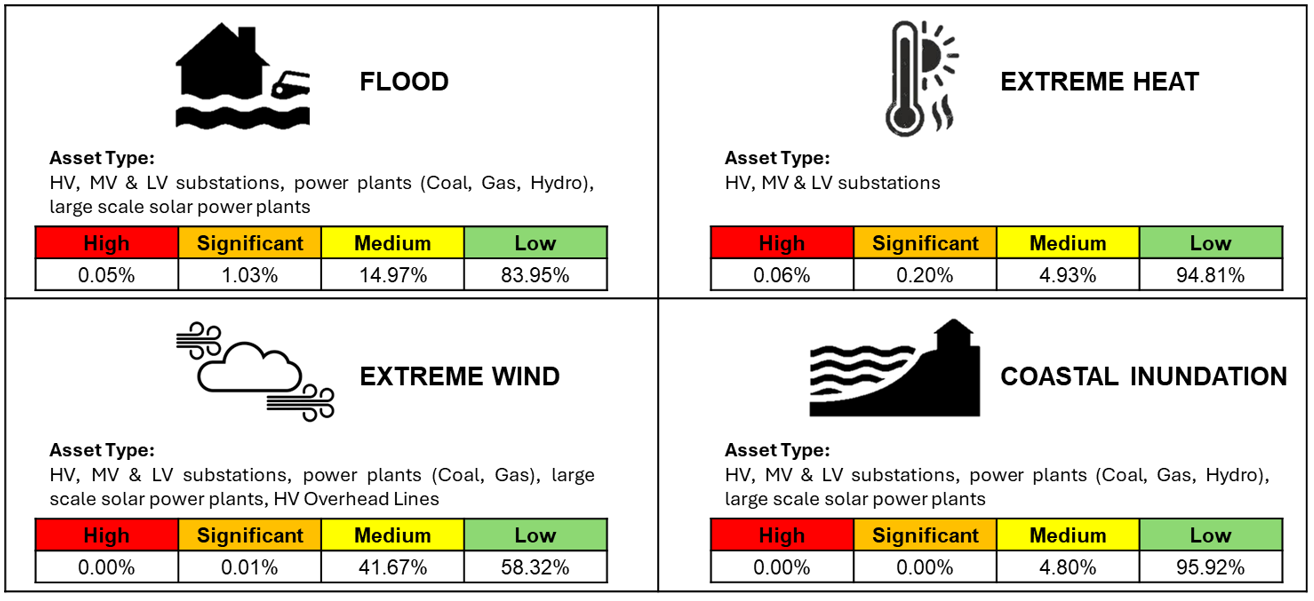(Continuation from Part 2 of the ESG Story – ‘TNB's Climate Adaptation Strategy: Enhancing Asset Resilience and Adaptation’, dated 27 March 2025)
As climate change accelerates, businesses are increasingly exposed to a range of physical risks that can disrupt operations and impact financial performance. These risks arise from the direct effects of climate-related events, such as extreme weather conditions, rising sea levels, and temperature fluctuations. Understanding and mitigating these physical risks is crucial for ensuring long-term business continuity and sustainability in a rapidly changing environment.
The TNB Climate Adaptation Strategy facilitates assessment of assets at high-risk of climate-related exposure and formulation of tailored adaptation plans to safeguard these assets against extreme weather events. TNB is actively implementing necessary measures to enhance the resilience of operations and assets, safeguarding them against both acute and chronic physical risks associated with climate change.
Acute Physical Risk
- Riverine Flooding
- Surface Water Flooding
- Extreme Wind
- Forest Fire
Chronic Physical Risk
- Extreme Heat
- Soil Movement
- Sea Level Increase
Climate Risk Assessment Approach
In 2024, detailed climate risk assessments at the asset level were conducted to better understand climate-related threats to critical assets. This assessment is instrumental in the development of focused and sustainable adaptation actions.
Guided by the National Climate Change Risk Assessment (NCCRA), we assess the exposure and vulnerability of assets to the impact of climate hazards.

Specifically, climate data from agencies such as the Malaysian Meteorological Department, the National Agency for Disaster Management, and the National Water Research Institute of Malaysia (NAHRIM) is integrated into TNB's Geographic Information System (GIS) and overlaid with our asset geographic coordinates. Our assessment focuses on hazards such as inland floods, extreme winds, coastal inundation and extreme heat, while the assessment of other climate hazards continues to be explored.
-
Floods
- Floods, especially during Malaysia's monsoon season, pose significant risks to critical infrastructure particularly in low-lying areas. Substations and transformers are vulnerable to water damage, causing equipment failure and delaying repairs. Addressing these challenges is vital for a reliable supply of electricity while safeguarding personnel and the public.
-
Extreme Heat
- Extreme heat reduces solar output, lowers thermal plant efficiency, and raises fuel costs. It also strains grid reliability, especially at substations, leading to potential overloading and thermal stress. Addressing these issues is essential for maintaining efficient operations and a stable electricity supply.
-
Extreme Wind
- Extreme winds risk damaging transmission networks, lattice towers, poles, and solar plants. This can cause collapse, displacement, and panel damage, leading to costly repairs, downtime, and electricity supply disruptions. Strengthening infrastructure against such events is essential.
-
Sea Inundation
- Rising sea levels threaten coastal assets, freshwater supplies, and infrastructure integrity due to saltwater exposure and corrosion. High tides and storm surges increase the risk, highlighting the need for proactive climate resilience in asset management to protect communities and ecosystems.
As a result of our climate risk assessment, majority of assets are at low risk, reflecting their resilience:

Our asset resilience is the outcome of proactive and long-term adaptation measures continuously undertaken to address physical risks.
| Physical Risk | TNB Adaptation Measures |
|---|---|
| Flood |
|
| Extreme Heat |
|
| Extreme Wind |
|
| Sea Inundation |
|
We remain committed to addressing physical risks, ensuring the safety and security of our operations, assets, and personnel. Through comprehensive risk management strategies, we are mitigating potential hazards across our diverse infrastructure. Our focus on continuous improvement, emergency response preparedness and business resiliency emphasise the importance of effectively managing physical risks, which not only enhances operational efficiency but also reinforces TNB’s position as a reliable and responsible leader in the energy sector.